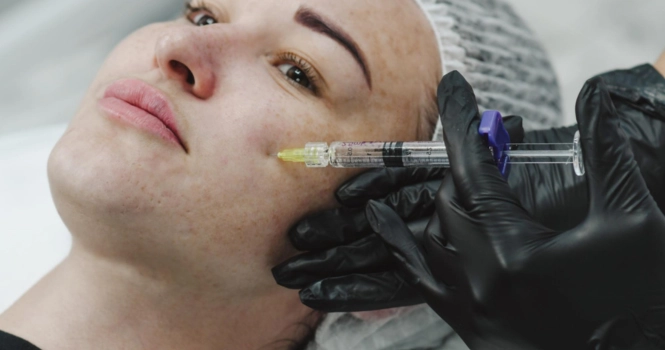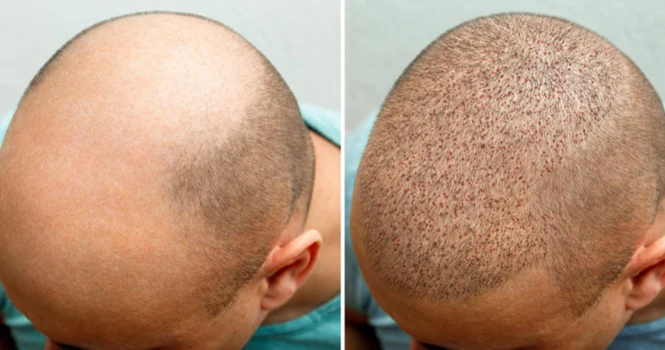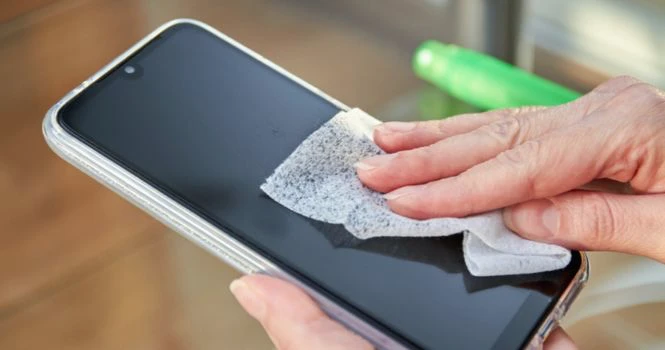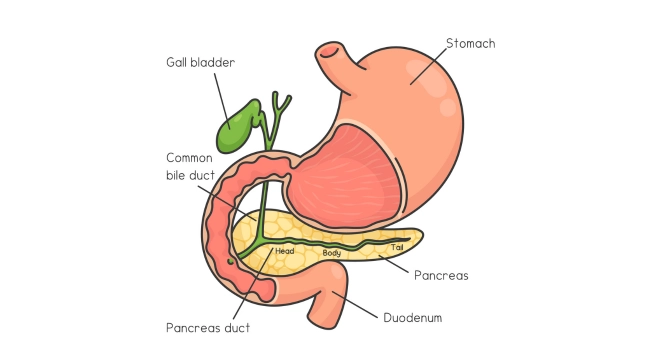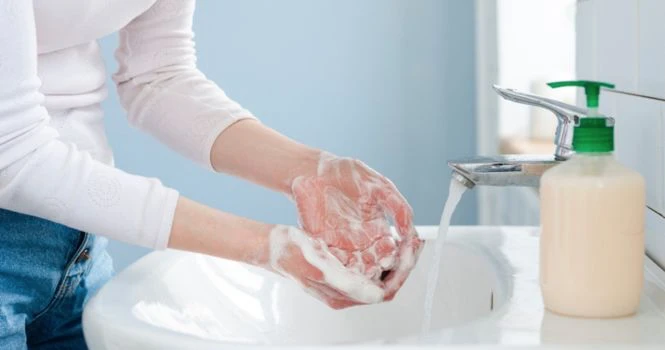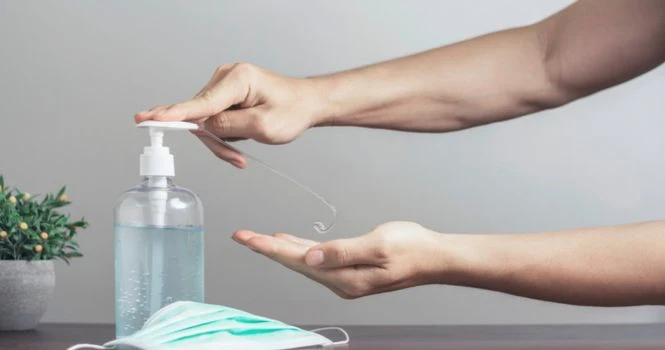In a startling public health revelation, the Center for Disease Control and Prevention (CDC) have linked multiple HIV infections to a series of cosmetic procedures known as vampire facials at an unlicensed spa in New Mexico. This unprecedented case has highlighted severe lapses in sanitary practices and raised significant concerns over the safety of popular cosmetic treatments.
The initial case, identified in 2018, involved a woman who tested positive for HIV with no traditional risk factors, except for a recent cosmetic procedure that involved re-injecting her own blood back into her face — a technique touted for its supposed anti-aging benefits.
This discovery prompted a comprehensive investigation, uncovering a disturbing connection between the spa’s operations and the transmission of HIV to five individuals.

Source: https://www.cdc.gov/mmwr/volumes/73/wr/pdfs/mm7316a3-H.pdf
CDC Investigations into several HIV cases among individuals without traditional risk factors, who underwent vampire facials at an unlicensed spa in New Mexico, suggest that these infections were likely transmitted through the cosmetic injection services provided there.
Before going into details, Let’s see
How CDC identified that all 5 HIV positive patients had contracted HIV at that particular Centre?
It involved tracing the patients’ histories to identify common activities or exposures. In this case, all five individuals had undergone vampire facials at the same spa.
Blood samples from the patients were analyzed to determine the genetic sequences of the HIV virus present in each individual. This type of analysis helps to understand the genetic makeup of the virus and compare it across different samples. It is called Nucleotide Sequence Analysis
Phylogenetic Analysis: This method was used to construct a family tree of the virus from different patients. It helps in identifying whether the viruses are closely related, suggesting a common source of infection.
Cluster Analysis: The sequences were analyzed to see if they formed a cluster, indicating that the infections were closely linked and likely came from the same source.
Let’s understand more about the procedure
What is Vampire Facial?
Vampire facials, also known as PRP (Platelet-Rich Plasma) facials, involve drawing venous blood into a tube and then using a centrifuge to separate the plasma from the blood cells. This process yields platelet-rich plasma, which is rich in growth factors that can help regenerate and rejuvenate the skin.
The plasma is then either injected directly into specific areas of the face to promote skin health and repair or applied topically in conjunction with microneedling. Microneedling involves puncturing the skin with tiny, sterile needles to stimulate collagen production, improve skin elasticity, and reduce the appearance of aging.
This procedure is also used for maintenance and nourishment of implanted hair follicles.
While all these procedures are in trend, it is advisable to contact your dermatologist or plastic surgeon as there is not much scientific research or clinical evidence to back the procedure.
The problem arises if safety precautions are not followed while handling blood, from collection, to storing to injecting and till disposal as diseases could be transmitted from blood.
Diseases Transmitted from Blood
Disease transmitted from blood include,
- Hepatitis A, B, C & E
- HIV
- Human T-lymphotropic Virus (HTLV)
- Syphilis
- Brucellosis
- Chagas
- Leishmaniasis
- Malaria
- Dengue
- West Nile
- Yellow
- Zika
Possible Routes of HIV transmission from Vampire Facial
The following are some of the key potential transmission pathways:
1. Contaminated Equipment: If needles or microneedling devices are reused without proper sterilization, they can carry HIV( Human Immunodeficiency Virus) from one person to another. This is particularly risky if the equipment is used to draw blood or penetrate the skin, which are common practices in vampire facials.
2. Improper Handling of Blood Products: During vampire facials, blood is drawn from the client, processed to concentrate platelets, and then re-injected into the skin. If this blood is mishandled, or if equipment contaminated with HIV-positive blood is used, the virus can be transmitted to others.
3. Cross-Contamination: Tools like centrifuges or containers used to separate and hold blood components could become sources of cross-contamination if they are not properly cleaned between uses. This includes any surface or instrument that comes into contact with blood or blood products.
4. Inadequate Disinfection Protocols: Failure to adhere to rigorous disinfection and sterilization protocols can allow HIV to remain on surfaces or in substances that come into contact with multiple clients.
5. Lack of Personal Protective Equipment (PPE): If the personnel performing the procedure do not use appropriate protective gear, such as gloves, they might facilitate the transmission of HIV between clients indirectly through their own contaminated hands or clothing.
These routes highlight the critical importance of following stringent infection control protocols in any setting where blood products are handled or procedures involving skin penetration are performed.
Precautions to be Taken | Key Preventive Steps
Precautions are important because once the HIV virus enters the body, there is no way to remove the virus completely from the body, yet.
However, the HIV Viral load can be reduced, so that it can be undetectable in the laboratory tests, so that the person no longer transmits the virus. When the virus is undetectable, it is also untransmittable (U=U, Undetectable = Untransmittable).
For individuals considering cosmetic treatments like vampire facials, taking precautions is crucial to ensure safety and prevent the transmission of infections such as HIV.
The following precautions are to be taken to be safe,
1. Choose Licensed Facilities: Always select a reputable and licensed facility for any cosmetic procedures. Verify that the spa or clinic adheres to state and local health regulations.
2. Ask About Sterilization Practices: Before undergoing any treatment that involves blood or skin penetration, ask about the facility’s sterilization practices. Ensure that they use new, disposable needles and equipment for each client.
3. Check Staff Credentials: Ensure that the individuals performing the procedure are certified and trained. Proper training includes not only how to perform the procedure but also how to handle tools and biological materials safely.
4. Observe Hygiene Standards: Watch whether the facility maintains a clean and sanitary environment. Staff should wear gloves and other protective gear and should change them between sessions with different clients.
5. Seek Information on the Procedure: Fully understand what the procedure entails, including any risks associated with it. Ask how the facility handles the blood products and what steps they take to prevent contamination.
6. Inquire About Emergency Protocols: Find out if the facility has protocols in place for handling medical emergencies, including potential infectious exposures.
7. Consult Your Doctor: Before undergoing procedures involving blood, consult with your doctor, especially if you have underlying health conditions or concerns about infection risks.
8. Follow Post-Procedure Care Instructions: Adhere to all aftercare instructions provided by the facility to minimize infection risks and ensure proper healing.
Taking these precautions can help individuals protect themselves from potential infections and ensure a safe experience with cosmetic treatments.



